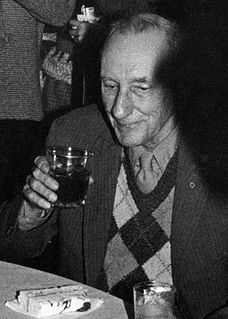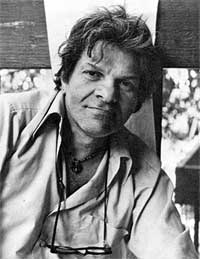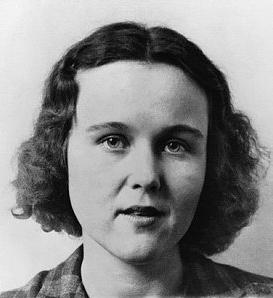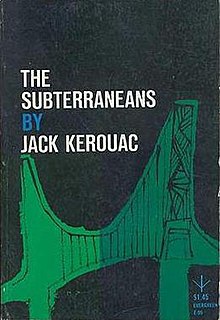Related Research Articles

Irwin Allen Ginsberg was an American poet and writer. As a student at Columbia University in the 1940s, he began friendships with William S. Burroughs and Jack Kerouac, forming the core of the Beat Generation. He vigorously opposed militarism, economic materialism, and sexual repression, and he embodied various aspects of this counterculture with his views on drugs, hostility to bureaucracy, and openness to Eastern religions.

Jean-Louis Lebris de Kérouac, often known as Jack Kerouac, was an American novelist of French Canadian ancestry, who, alongside William S. Burroughs and Allen Ginsberg, was a pioneer of the Beat Generation.

William Seward Burroughs II was an American writer and visual artist. Burroughs was a primary figure of the Beat Generation and a major postmodern author whose influence affected popular culture as well as literature. Burroughs wrote eighteen novels and novellas, six collections of short stories and four collections of essays. Five books have been published of his interviews and correspondences. He also collaborated on projects and recordings with numerous performers and musicians and made many appearances in films. He was also briefly known by the pen name William Lee. Burroughs created and exhibited thousands of paintings and other visual artworks, including his celebrated 'Gunshot Paintings'.
The Beat Generation was a literary movement started by a group of authors whose work explored and influenced American culture and politics in the post-war era. The bulk of their work was published and popularized throughout the 1950s. The central elements of Beat culture are the rejection of standard narrative values, making a spiritual quest, the exploration of American and Eastern religions, the rejection of economic materialism, explicit portrayals of the human condition, experimentation with psychedelic drugs, and sexual liberation and exploration.

Gregory Nunzio Corso was an American poet, youngest of the inner circle of Beat Generation writers.

Anne Waldman is an American poet. Since the 1960s, Waldman has been an active member of the Outrider experimental poetry community as a writer, performer, collaborator, professor, editor, scholar, and cultural/political activist. She has also been connected to the Beat poets.

Joan Vollmer was the most prominent female member of the early Beat Generation circle. While a student at Barnard College, she became the roommate of Edie Parker. Their apartment became a gathering place for the Beats during the 1940s, where Vollmer was often at the center of marathon, all-night discussions. In 1946, she began a relationship with William S. Burroughs, later becoming his common-law wife. In 1951, Burroughs killed Vollmer in what he first admitted to and shortly thereafter denied as a drunken attempt at playing William Tell.

The Subterraneans is a 1958 novella by Beat Generation author Jack Kerouac. It is a semi-fictional account of his short romance with Alene Lee (1931–1991), an African-American woman, in Greenwich Village, New York. Kerouac met Alene in the late summer of 1953 when she was typing up the manuscripts of William Burroughs and Allen Ginsberg, in Allen's Lower East Side apartment. In the novella, Kerouac moved the story to San Francisco and renamed Alene Lee "Mardou Fox". She is described as a carefree spirit who frequents the jazz clubs and bars of the budding Beat scene of San Francisco. Other well-known personalities and friends from the author's life also appear thinly disguised in the novel. The character Frank Carmody is based on William S. Burroughs, and Adam Moorad on Allen Ginsberg. Even Gore Vidal appears as successful novelist Arial Lavalina. Kerouac's alter ego is named Leo Percepied, and his long-time friend Neal Cassady is mentioned only in passing as Leroy.

Herbert Edwin Huncke was an American writer and poet, and active participant in a number of emerging cultural, social and aesthetic movements of the 20th century in America. He was a member of the Beat Generation and is reputed to have coined the term.

The Town and the City is a novel by Jack Kerouac, published by Harcourt Brace in 1950. This was the first major work published by Kerouac, who later became famous for his second novel On the Road (1957). Like all of Jack Kerouac's major works, The Town and the City is essentially an autobiographical novel, though less directly so than most of his other works. The Town and the City was written in a conventional manner over a period of years, and much more novelistic license was taken with this work than after Kerouac's adoption of quickly written "spontaneous prose". The Town and the City was written before Kerouac had developed his own style, and it is heavily influenced by Thomas Wolfe.

Lucien Carr was a key member of the original New York City circle of the Beat Generation in the 1940s; later he worked for many years as an editor for United Press International.

The Jack Kerouac School of Disembodied Poetics is a school of Naropa University, located in Boulder, Colorado, United States. It was founded in 1974 by Allen Ginsberg and Anne Waldman, as part of Chögyam Trungpa Rinpoche’s 100-year experiment.

Mexico City Blues is a poem published by Jack Kerouac in 1959 composed of 242 "choruses" or stanzas. Written between 1954 and 1957, the poem is the product of Kerouac's spontaneous prose, his Buddhism, and his disappointment at his failure to publish a novel between 1950's The Town and the City and 1957's On the Road.

Reality Sandwiches is a book of poetry by Allen Ginsberg published by City Lights Publishers in 1963. The title comes from one of the included poems, "On Burroughs' Work": "A naked lunch is natural to us,/we eat reality sandwiches." The book is dedicated to friend and fellow Beat poet Gregory Corso. Despite Ginsberg's feeling that this collection was not his most significant, the poems still represent Ginsberg at a peak period of his craft.

Alan Ansen was an American poet, playwright, and associate of Beat Generation writers. He was a widely read scholar who knew many languages. Ansen grew up on Long Island and was educated at Harvard. He worked as W. H. Auden's secretary and research assistant in 1948-49; he was the main author of the chronological tables in Auden's The Portable Greek Reader and Poets of the English Language.

Corso: The Last Beat is a 2009 documentary film, with on-screen narration by Ethan Hawke and appearances by Patti Smith, Allen Ginsberg, William Burroughs and Gregory Corso.
Beat Scene is a UK-based magazine dedicated to the work, the history and the cultural influences of the Beat Generation. As well the best known and more obscure Beat novelists and poets this has included artists, musicians filmmakers and publishers. The content largely consists of articles, memoirs, interviews and reviews.

Jim Cohn is a poet, poetry activist, and spoken word artist in the United States. He was born in Highland Park, Illinois, in 1953. Early poetics and musical influences include Bob Dylan, the subject of a now lost audiotaped for a class project completed in his senior year at Shaker Heights High School, where he also co-captained the varsity football team. He received a BA from the University of Colorado at Boulder in English (1976) and a Certificate of Poetics (1980) from the Jack Kerouac School of Disembodied Poetics at Naropa University where he was a teaching assistant to Allen Ginsberg. He received his M.S. Ed. in English and Deaf Education from the University of Rochester and the National Technical Institute for the Deaf (NTID) in 1986. For over two decades, he worked in the field of disability services, taking a siddha approach as a model of Disability Services and Studies practice and scholarship. He believed that the social sciences should be redefined thematically within the United States into a form of American Karmic Studies.
Naked Lens: Beat Cinema is a book by Jack Sargeant about the relationship between Beat culture and underground film. First published by Creation Books in 1997, the book has been subsequently republished in two different English language editions, by Creation Books in 2001 and Soft Skull in 2008. The book also features contributions from Tessa Hughes-Freeland, Stephanie Watson, and Arthur and Corrine Cantrill.

The Beat Museum is located in San Francisco, California and is dedicated to preserving the memory and works of the Beat Generation.
References
- ↑ Tough, Paul (February 15, 2004). "This You Call a College?". The New York Times.
| This article about a biographical book on writers or poets is a stub. You can help Wikipedia by expanding it. |